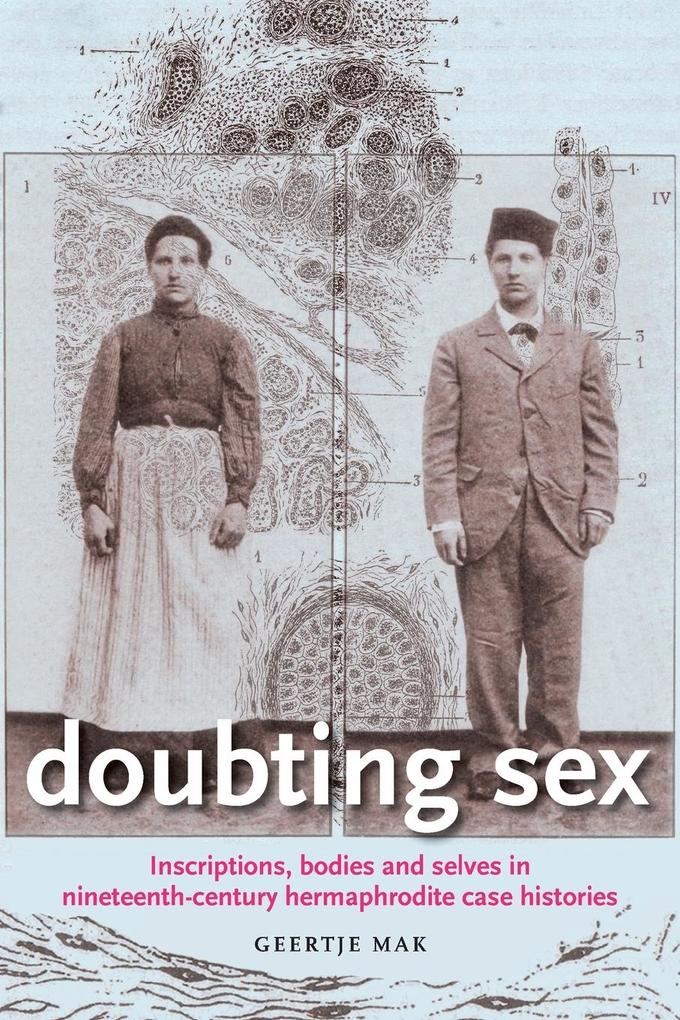
Zustellung: Mo, 05.05. - Do, 08.05.
Versand in 6 Tagen
VersandkostenfreiBestellen & in Filiale abholen:
An adolescent girl is mocked when she takes a bath with her peers, because her genitals look like those of a boy. A couple visits a doctor asking to 'create more space' in the woman for intercourse. A doctor finds testicular tissue in a woman with appendicitis, and decides to keep his findings quiet. These are just a few of the three hundred European case histories of people whose sex was doubted during the long nineteenth century that Geertje Mak draws upon in her remarkable new book.
How did people deal with such situations? How did they decide to which sex a person should belong? This groundbreaking analysis of clinical case histories shows how sex changed from an outward appearance inscribed in a social body to something to be found deep inside body and self. A fascinating, easy to follow, yet sophisticated argument addressing major issues of the history of body, sex, and self, this volume will fit advanced undergraduate courses, while challenging specialists.
How did people deal with such situations? How did they decide to which sex a person should belong? This groundbreaking analysis of clinical case histories shows how sex changed from an outward appearance inscribed in a social body to something to be found deep inside body and self. A fascinating, easy to follow, yet sophisticated argument addressing major issues of the history of body, sex, and self, this volume will fit advanced undergraduate courses, while challenging specialists.
Inhaltsverzeichnis
Introduction
I - Inscription
1. Secrecy and disclosure: Politics of containment
2. Early sex reassignments and the absence of a sex of self
3. Herculine Barbin
II - Body
4. How to get the semen to the neck of the womb
5. Justine Jumas: Conflicting body politics
6. The dislodgement of the person
III - Self
7. Sex assignment around 1900: From a legal to a clinical issue
8. The turn inwards
9. Scripting the self: N. O. Body's autobiography
Conclusion
Bibliography
Index
I - Inscription
1. Secrecy and disclosure: Politics of containment
2. Early sex reassignments and the absence of a sex of self
3. Herculine Barbin
II - Body
4. How to get the semen to the neck of the womb
5. Justine Jumas: Conflicting body politics
6. The dislodgement of the person
III - Self
7. Sex assignment around 1900: From a legal to a clinical issue
8. The turn inwards
9. Scripting the self: N. O. Body's autobiography
Conclusion
Bibliography
Index
Produktdetails
Erscheinungsdatum
01. Februar 2013
Sprache
englisch
Seitenanzahl
296
Autor/Autorin
Geertje Mak
Verlag/Hersteller
Produktart
kartoniert
Gewicht
453 g
Größe (L/B/H)
234/156/17 mm
ISBN
9780719089978
Entdecken Sie mehr
Pressestimmen
"Here praxiography moves into history. The result is stunning. Learn how sexed bodies and selves-with-a-sex got crafted in 19th century western Europe. Revel in the productivity of doubt. And enjoy the intellectual pleasure throughout." Annemarie Mol, Prof. Anthropology of the Body, University of Amsterdam -- .
Bewertungen
0 Bewertungen
Es wurden noch keine Bewertungen abgegeben. Schreiben Sie die erste Bewertung zu "Doubting sex" und helfen Sie damit anderen bei der Kaufentscheidung.









